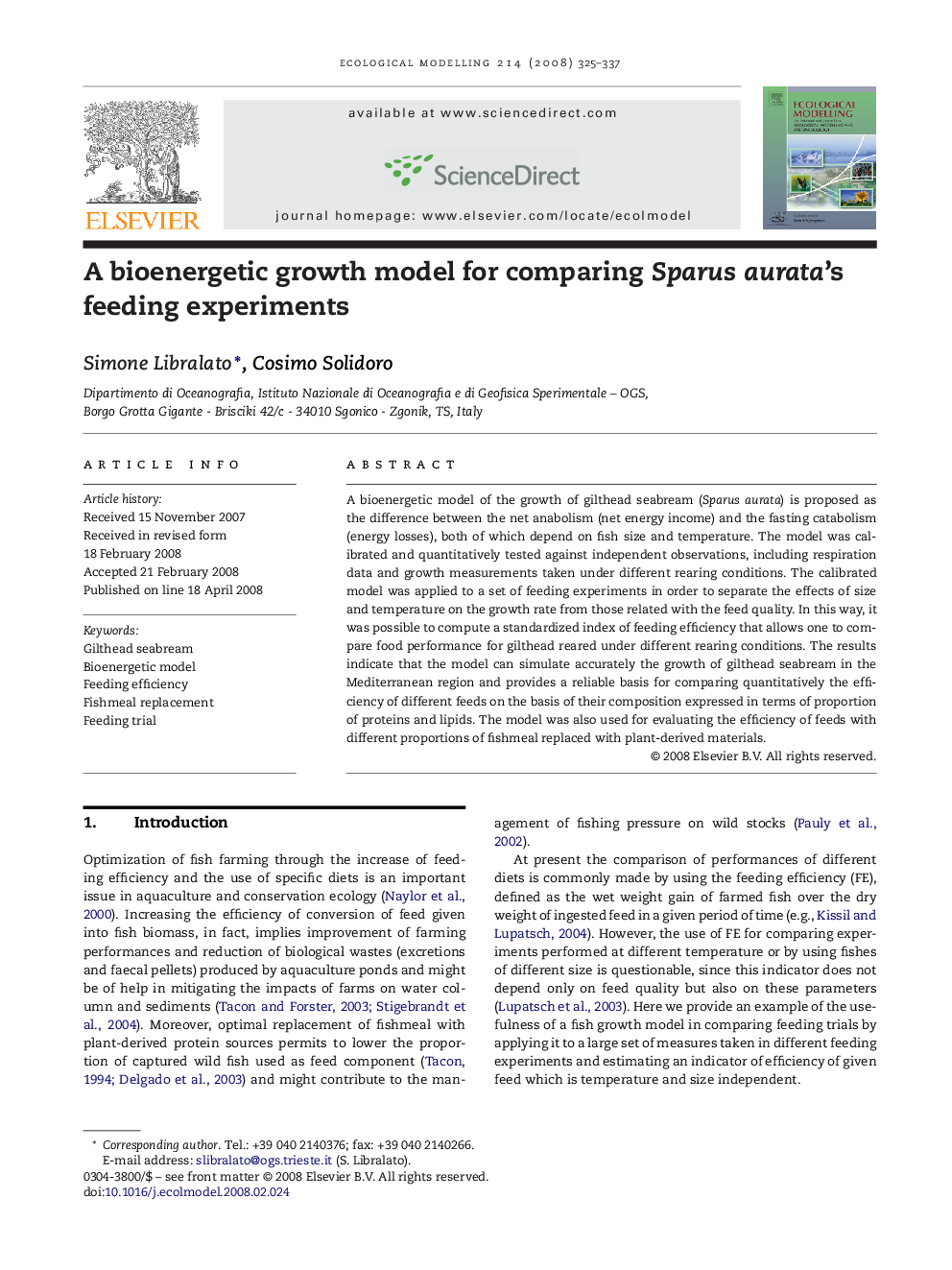| Article ID | Journal | Published Year | Pages | File Type |
|---|---|---|---|---|
| 4378175 | Ecological Modelling | 2008 | 13 Pages |
A bioenergetic model of the growth of gilthead seabream (Sparus aurata) is proposed as the difference between the net anabolism (net energy income) and the fasting catabolism (energy losses), both of which depend on fish size and temperature. The model was calibrated and quantitatively tested against independent observations, including respiration data and growth measurements taken under different rearing conditions. The calibrated model was applied to a set of feeding experiments in order to separate the effects of size and temperature on the growth rate from those related with the feed quality. In this way, it was possible to compute a standardized index of feeding efficiency that allows one to compare food performance for gilthead reared under different rearing conditions. The results indicate that the model can simulate accurately the growth of gilthead seabream in the Mediterranean region and provides a reliable basis for comparing quantitatively the efficiency of different feeds on the basis of their composition expressed in terms of proportion of proteins and lipids. The model was also used for evaluating the efficiency of feeds with different proportions of fishmeal replaced with plant-derived materials.
